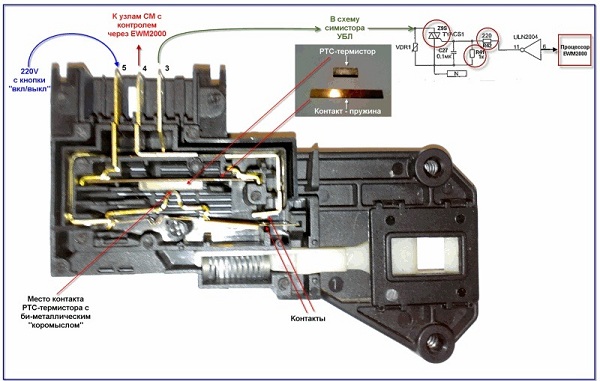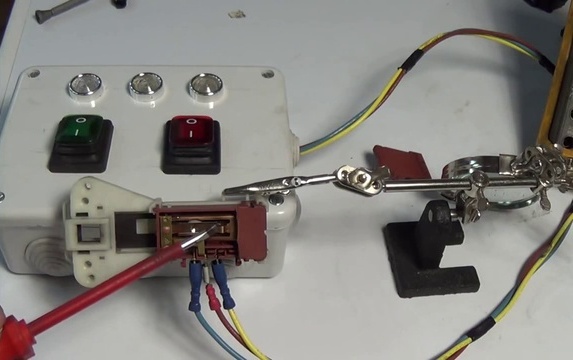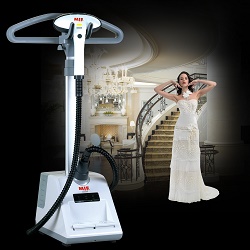The principle of operation and diagnosis of the washing machine lock
The lock of the washing machine is a protective mechanism that guarantees the preservation of tightness during operation. The lock prevents the involuntary opening of the cover during operation, and also stops wash programif the hatch is not tightly closed. Like the main part of the parts, the lock is subject to wear, so you need to replace it in a timely manner.

Principle of operation of the device
If the lock does not work correctly, it is better to replace it immediately. However, an average person may have difficulty finding and buying a suitable model. Of course, you can simply order the equipment in the service center, but it will take some time and will require additional funds. It will be much easier to decide if you accurately identify the cause of a malfunction of the lock.To do this, you need to understand its structure and principle of operation.
Typically, blockers in the manufacture of placed in plastic case. In the extreme part of the mechanism, a hole is provided for fastening a spring ring connecting the entire system to the hatch. Details of the castle are as follows:
- an iron plate connected to the spring of the boot lid;
- thermistor;
- bimetallic part, changing the size, responding to temperature;
- several contacts;
- pin.

Operating principle blocker pretty simple. After the lid is closed, the hook, engaging with the lock, acts on the plate, giving it the necessary position. After the lid lock signal is given, an electric current flows to the thermistor, the bimetallic part changes its shape, pushing the pin. When entering the hole, the pin reliably blocks the movement of the movable plate, thereby fixing the hatch. After that, the contacts located in the inner part of the lock are closed, and a signal is given that the hatch of the washing machine is securely closed. Enough to unlock the system turn off the voltage on thermistor.
Diagnosis of blocker problems
To check the removed lock, it is enough to put the movable plate in the required position and apply current to the contacts. With help tester You can easily check the correctness of their functioning. In addition, pay attention to the return of the locking mechanism after the removal of tension.

A faulty lock can lead to unpleasant consequences. For example, the most common problem: due to a faulty blocker unable to open hatch after washing. To eliminate the damage, do the following:
- Unplug the machine from the network and plumbing.
- Remove the top panel of the home appliance.
- Move the metal deadbolt from the hatch.
Read more about how to open the machine, if the door is locked, read here.
The next possible failure is the exact opposite of the above. Contrary to the tight pressing of the hatch cover to the body, the locking mechanism does not trigger. The washing program does not start until the system receives tightness signal. Most often this is due to a defective lock. To fix the problem, remove it from the hatch and check for wear.

In order to avoid a repetition of the incident, experts recommend changing the non-triggered mechanism.
To successfully remove the lock, you must:
- Prepare a suitable repair tool.
- Open the door of the home appliance.
- Find the wire ring.
- Carefully pull out the ring with a screwdriver or other tools.
- Move the lock cuff to a position that is easy to reach.
- Carefully remove the fixing bolts and pull out the lock.
Pulling out the special connectors, you complete the disassembly of the locking device. Installing a new or returning to the place of the old is done in the reverse order.
If in time to replace worn parts and closely monitor the washing machine, it will qualitatively perform its functions for many years. Regular prophylaxis will help prevent breakage, and careful care help prevent mold and odor.

/rating_on.png)
/rating_off.png)












